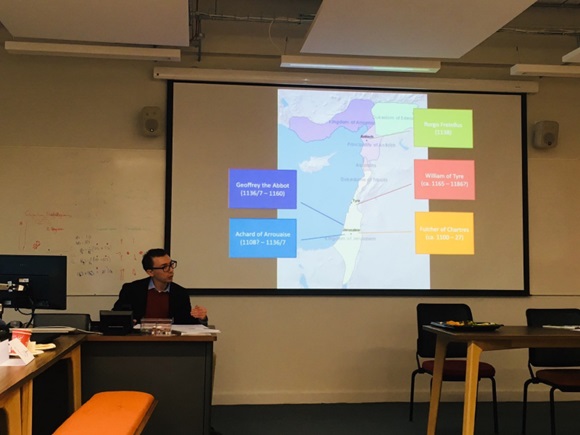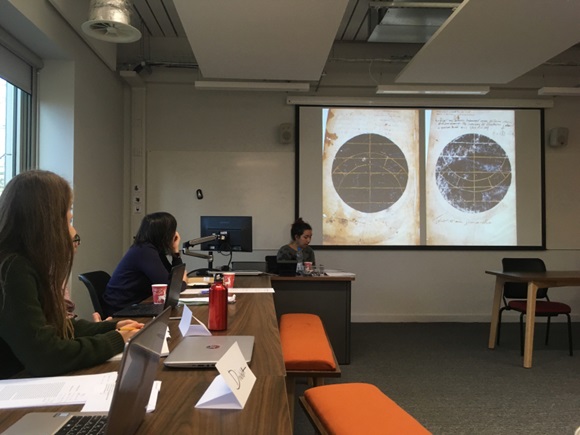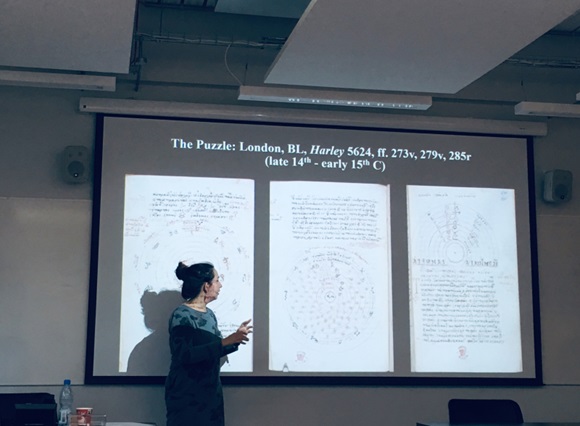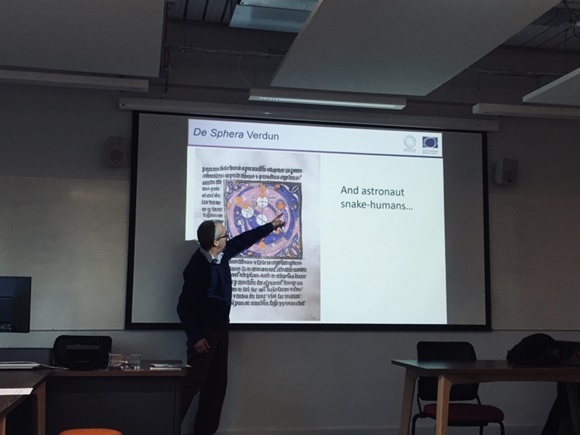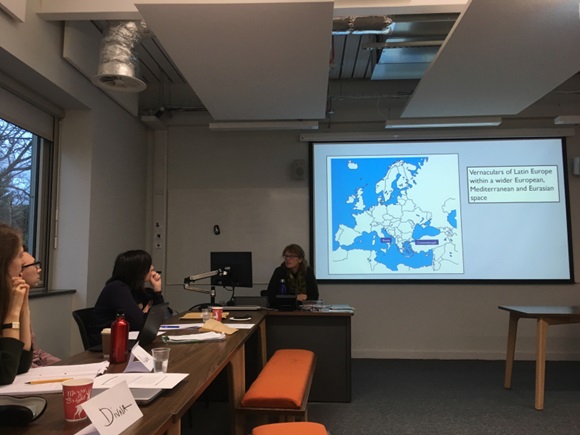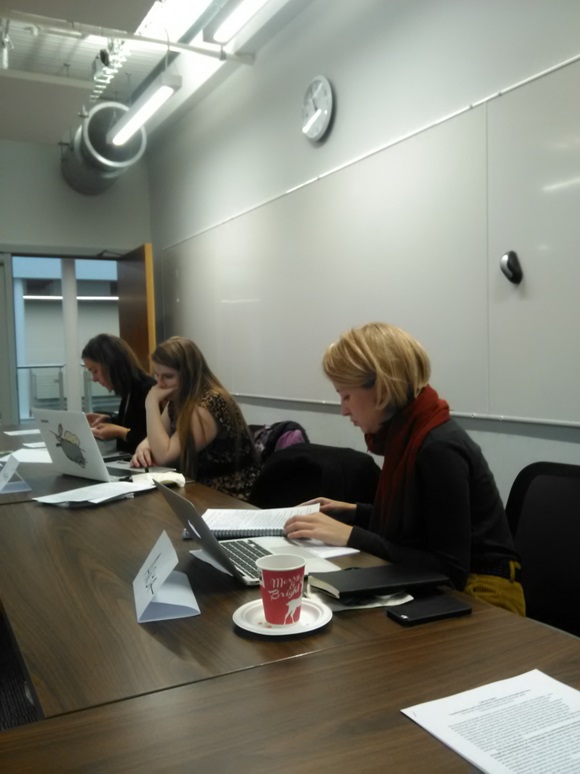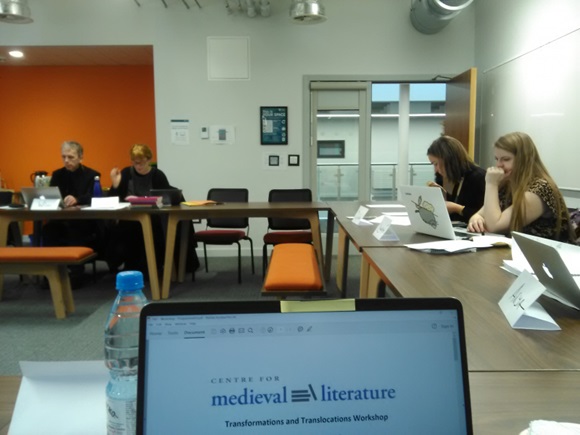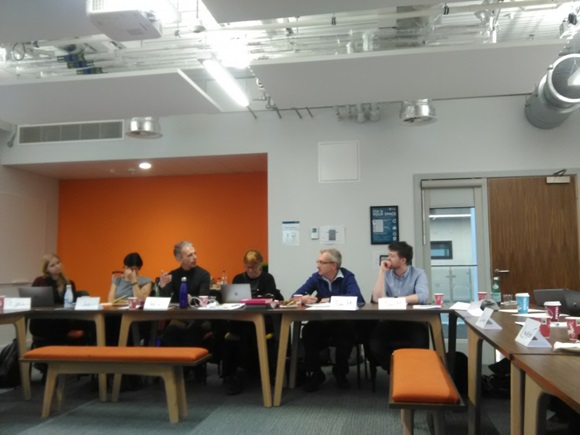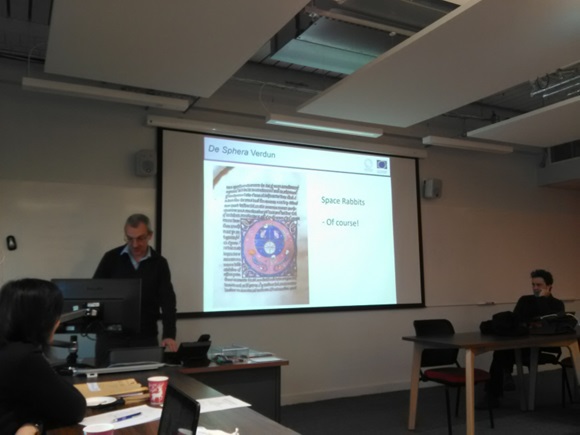Moving forms, communities, networks and constellations
Divna Manolova and Elizabeth Tyler on the Transformations and Translocations workshop launching CML's newest research strand.
CML's newest research strand Transformations and Translocations launched last Thursday with a workshop that aimed at exploring the movement of forms across literatures and histories and the intersections of forms with social networks and communities of various sorts. While focusing on forms, this strand proposed an historicist approach, advocating for a close dialogue between formalism and historicism as we think about how texts create links between people and how people and their movements create links between texts.
We experimented with a format that included three distinct modes of working together. First, we formed a reading and discussion group - a community of readers - focused on a selection of theoretical literature. The purpose was to lay theoretical foundations for our discussions, while also thinking critically about what we read and the work it aimed to do. Second, the workshop included presentations in pairs of scholars, from different disciplines (from physics to linguistics… as well as literature) and career stages, who each addressed the Transformations and Translocations research strand from their own research. Finally, we paired twice more. In the wind, we walked, in pairs, all around the lake and talked about what animates us and what we think we could take away from the workshop to apply to our respective studies of medieval literature.
The presentations kicked off with Julian Yolles on Reading Josephus in the Twelfth-Century Latin East and it is with Julian that we started thinking about communities of readers and about the distinctions between a community and a network. Jane Gilbert’s extended introduction to Bruno Latour’s An Inquiry into Modes of Existence: An Anthropology of the Moderns (2013), on the other hand, opened up the relationship between human and non-human, the existence of multiple ways of being, and the importance of diplomacy as an intellectual attitude. Latour also led us to consider the constructed nature of scientific knowledge which, as Tom McLeish then pointed out, nevertheless, does refer, can have a truth value and connotation.
Next, Wim Verbaal and Dinah Wouters asked us to think about Latin as a cosmopolitan language, as well as about the relationship, dependence and impact of schooling on literature across places and cultures. It is in this context that Dinah presented the Journal of Latin Cosmopolitanism and European Literatures. We also thought about textual traditions triggered by places and or moments in time and about the vocabulary we use when speaking about connections between human, nonhuman and textual agents – where we borrow it from (e.g., discourses about the Internet) and what are the ethical implications of our choices.
On Day 2, we returned to issues of form by reading Caroline Levine’s introduction to her Forms: Whole, Rhythm, Hierarchy, Network (2015). Her work prompted us to think about form as literary, social and political and thus, our discussion moved from the constraints of forms, which Levine emphasized, to the ways in which forms liberate us and enable us to at least start thinking and then to communicate. From this perspective, we discussed how forms enable the creation and functioning of communities.
Communities and constellations became our focus as we moved to cosmologies and shared or juxtaposed worldviews and views of the world with Benjamin Anderson and his Cosmos and Community in Early Medieval Art (2017). This reading framed presentations by Divna Manolova on Scientific Wonder in Late Byzantine Cosmology and Cosmography, Tom McLeish on From Trepidation to Precession: Transformation through Celestial Translocation and Anya Burgon on The ‘View from Above’ or Kataskopos in the Art and Literature of the Middle Ages. All three talks brought us back again to the idea of forms travelling or not, as well as to a discussion of isolation, privacy and privatisation in relation to cosmological knowledge and the role of the imperial. Importantly, the view of the kosmos prompted us to discuss beauty and pleasure in relation to wonder, and thus, medieval aesthetics. We finished this section following on to questions of medieval forms, especially, meter and diagrams and the ability of the latter to generate images. We ended with a fascinating discussion of the (dis)similar ways in which diagram and icon function in the Middle Ages.
Finally, we concluded with Elizabeth Tyler speaking about connected vernaculars (c. 350 – c. 1150) as interconnected elite phenomena. Her paper and Rosa Rodríguez Porto’s introduction of Carlo Ginzburg’s Clues, Myths and the Historical Method (2013) brought us back to our initial question of intersections between linguistic, literary and historical connections between languages, forms and people. This final section led us to a reflection not simply about connecting communities and shared identities but also the role of the outsider, issues of hostility, hospitality and diplomacy. We finished by taking stock of the particular contribution that we, scholars of medieval literature (broadly understood!) can make to questions of society and form with the Transformations and Translocations strand.
